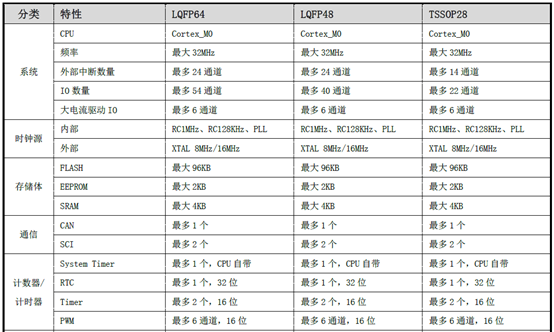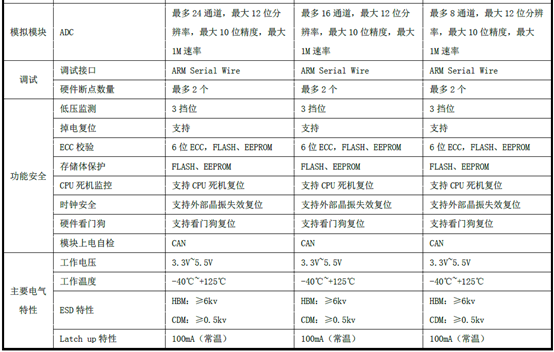According to authoritative market research institutions, the global MCU market size is expected to reach approximately $17.79 billion in 2020, with shipments exceeding 28 billion units. This year’s MCU market size is projected to reach $18.48 billion, with a compound annual growth rate (CAGR) of 10.1% from 2021 to 2028, growing to $36.16 billion by 2028.
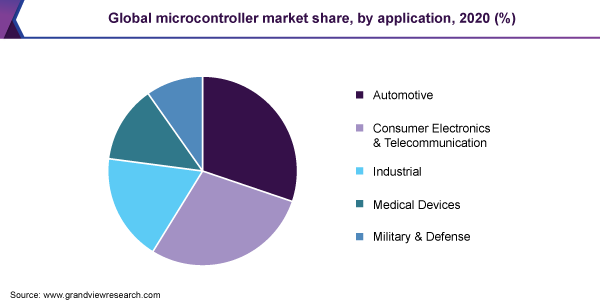
MCU chips are widely used in various electronic devices, including automotive, industrial, telecommunications, medical, and consumer electronics, with the automotive market accounting for 30.13% of the MCU share. Modern vehicles typically require 50-100 MCU chips, and the growth in MCU demand mainly comes from automotive electrification, enhanced safety features, ADAS and autonomous driving, in-car entertainment systems, and government regulations on vehicle emissions.
Automotive Grade MCU Supply Chain and Competitive Landscape
As the core component for vehicle control, MCUs are primarily used for body control, driving control, infotainment, and driver assistance systems. The automotive MCU market is relatively mature, with a stable competitive landscape. NXP, Infineon, Renesas, STMicroelectronics, and Texas Instruments have long occupied the top five positions in the global automotive MCU market, accounting for over 95% of the market share in 2020.
Automotive MCUs have many technical specifications tailored for different automotive applications, but most are produced using 40/45/65nm processes, with the operating costs of wafer fabs manufacturing automotive chips being significantly higher than for other chips. Therefore, most IDM manufacturers, such as NXP, Renesas, Infineon, Texas Instruments, and Microchip, supply MCU chips to customers through third-party foundries. The automotive MCU foundry industry is highly concentrated, with 70% of global capacity provided by TSMC.
However, MCU capacity only accounts for 3% of TSMC’s total capacity. The pandemic in 2020 led to a decline in demand in the automotive industry, causing MCU manufacturers to reduce orders and deplete inventory. At the beginning of 2021, the global automotive market rebounded, resulting in a short-term supply shortage of automotive chips. Since the second quarter of this year, Malaysia and Taiwan have experienced more severe outbreaks of the pandemic. TSMC is the main automotive MCU foundry, while Malaysia is a hub for packaging and testing (OSAT) suppliers such as NXP, Renesas, and Infineon. Therefore, the automotive MCU industry may be hit hard again, causing greater impacts on the chip supply chain.
Currently, one of the main reasons for the suspension of most vehicle and component production is the high demand for MCUs from automotive manufacturers, while the supply of MCUs is insufficient. The automotive chip shortage is expected to last until the end of 2021, but it is anticipated to begin easing in 2022, mainly due to the following factors:
(1) Suppliers and foundries are competing to expand capacity. For example, Infineon plans to complete a 12-inch wafer fab by the end of 2021; TSMC’s MCU output in 2021 is expected to increase by 60% compared to 2020, and it is focusing on expanding its Nanjing plant (28nm) to gain greater MCU capacity.
(2) Domestic chip companies in China are striving to enter the automotive MCU market. It is expected that they will enter large-scale production in 2022, alleviating the automotive MCU chip shortage through “domestic substitution.” For example, GigaDevice plans to launch its latest automotive MCU product line this year.
Opportunities for the Development of Chinese Automotive MCU Manufacturers
With the trends of automotive intelligence, connectivity, and electrification, the long-term chip shortage in the automotive sector is likely to become the norm. The fundamental solution for the supply security of the Chinese intelligent connected vehicle industry chain is to establish an independent semiconductor industry supply chain. The current chip shortage will provide an excellent window of opportunity for the Chinese MCU industry.
From the perspective of the MCU ecosystem, the entire MCU ecosystem encompasses many aspects, including various software, hardware, development tools, and open-source platforms used by end customers. Currently, China still heavily relies on foreign IC design software and development tools. Fortunately, automotive MCUs do not require the most advanced manufacturing processes and development tools, so this weakness will not significantly impact the entire MCU industry.
In the context of chip shortages, international automotive manufacturers urgently need multiple channels to procure MCUs that meet automotive quality specifications. Automotive manufacturers are beginning to consider increasing procurement channels and candidate suppliers, which presents an opportunity for Chinese MCU manufacturers to enter the global automotive supply chain.
Among the many domestic MCU manufacturers, a few companies such as AutoChips, ChipON, Saiteng Micro, Chipways, and BYD Semiconductor have already mass-produced MCUs and entered the automotive OEM supply chain, but their products are still limited to simple control applications, such as windows, lighting, and cooling systems, and are still rare in complex applications such as powertrain control, intelligent cockpits, and ADAS.
MCUs are platform-based products, and suppliers need to build ecosystems and developer communities around their MCU chips, providing comprehensive solutions from chips, development boards, software, development tools to application solutions. International manufacturers have rich automotive product lines and can provide customers with a full range of products and services. Currently, Chinese manufacturers are working hard to layout a full range of MCU product lines, with breakthroughs expected in the following two areas:
Body Control:MCU solutions for in-vehicle wireless charging, ambient light control, and streamlined tail light control. These features were previously only available for high-end models but are now widely applied to mid-range and low-end models, with demand growing rapidly. For example, Saiteng Microelectronics has launched in-vehicle wireless charging and streamlined flashing tail light control MCUs, with shipments exceeding 1.5 million units as of January 2021.
Power Control:Chinese manufacturers have begun to launch related chips, but currently, there are no heavyweight products. In May, ChipON launched a new automotive MCU KF32A156 that meets AEC-Q100 standards and uses a self-developed core processor, suitable for power and motor control. Compared to previous products, this chip has a wider power domain and can be used for 70% of body and power control unit modules.
In addition to improving product line layout, building an independent industrial chain is also crucial. Coordinating upstream and downstream resources from EDA/IP, chip design, to wafer foundry and packaging/testing will help the healthy development of the domestic automotive MCU industry chain.
What Factors Should Engineers Consider When Choosing Automotive Grade MCUs?
Modern new cars typically contain 50-100 electronic control units (ECUs), each of which contains one or more MCUs, and they require up to a kilometer of wiring to connect them to multiple different networks. For automotive electronics engineers, selecting the appropriate MCU for different functional applications is also a significant challenge.
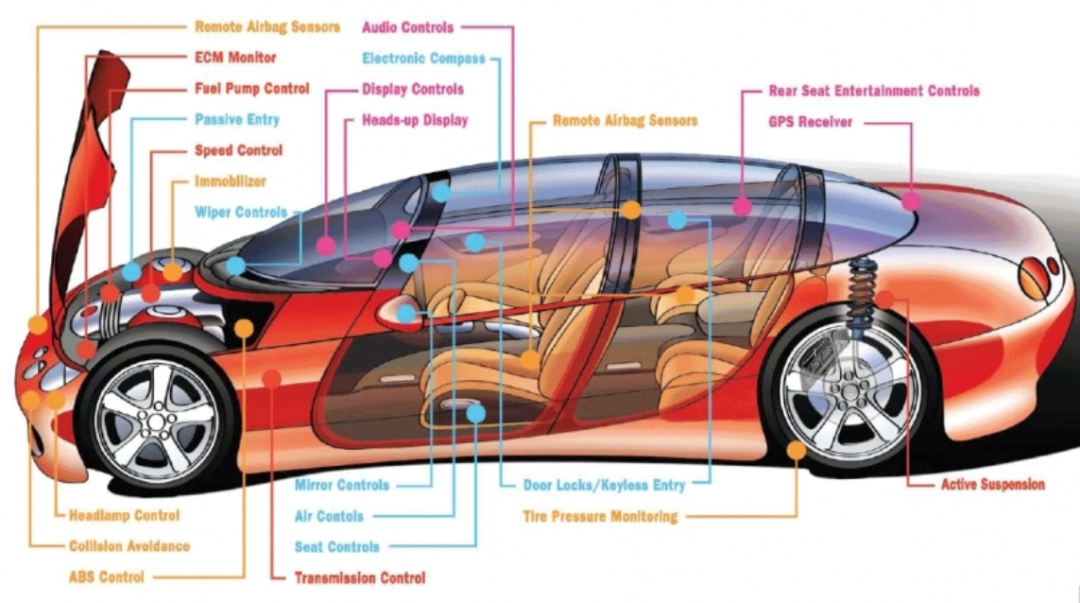
Modern vehicles require many MCUs to control different functions. (Source: Microchip)
In the power systems of traditional internal combustion engine vehicles, there are independent control systems for fuel injection, ignition, throttle, cooling, automatic transmission, and onboard diagnostics; chassis control systems for power steering, brakes, and airbags; and body control systems for headlights, wipers, power doors, power windows, and HVAC. For new electric or hybrid vehicles, advanced functions such as battery management, motor control, and advanced driver assistance systems (ADAS) require more and more powerful independent MCUs. Additionally, intelligent cockpits, various advanced entertainment and information systems, and different levels of autonomous driving further complicate the selection of MCUs and system-on-chips (SoCs).
In addition to functional complexity, automotive grade MCUs also face strict technical and regulatory barriers. Whether 8-bit, 16-bit, or 32-bit MCUs, they must meet the standards of the Society of Automotive Engineers (SAE). There are three standard specifications for automotive grade MCUs:
1. AEC-Q100 reliability standard;
2. Supply chain quality management standard IATF 16949 compliant with zero defects;
3. ASIL functional safety assurance level compliant with ISO26262.
The defect rate for consumer-grade MCUs can be ≤200 DPPM, but for automotive-grade MCUs, it must be ≤1 DPPM, meaning that at most one defective unit can be found in every million MCUs; the operating temperature range for consumer-grade MCUs is -30 to 85°C, while automotive-grade MCUs often require a harsher operating environment of -40 to 125°C; the working life of automotive-grade MCUs generally exceeds 15 years, while consumer-grade MCUs only require 3-5 years. Additionally, automotive-grade MCUs require functional safety low-level software support to ensure the safe and stable operation of vehicles, and they have higher resource and supply system requirements based on different applications.
There are no isolated MCUs in vehicles; all MCUs and surrounding devices and functional modules are part of a network, depending on their functions, and they need to communicate with each other to coordinate their work. The main automotive network protocols include CAN, LIN, FlexRay, MOST, and Ethernet AVB.
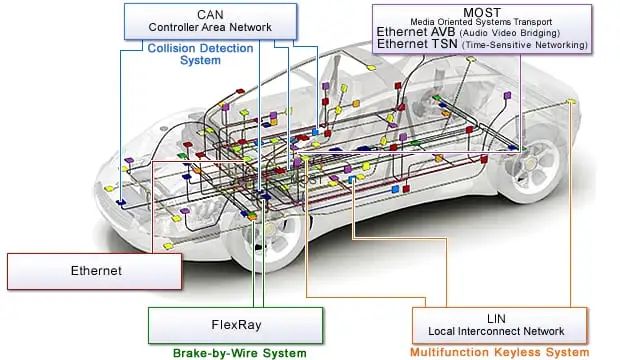
The Controller Area Network (CAN) is currently the main network for cockpit, powertrain, chassis, and body systems. Active Safety CAN can control millimeter-wave radar, which can sense oncoming vehicles and issue warnings, brake, or even control steering; the automotive instrument responds to warnings from the radar via the CAN bus, which can trigger alerts; the brake control CAN may initiate weak or strong braking control depending on wheel speed and the proximity of another vehicle; similarly, the MCU connected to the seatbelt can pre-tension the seatbelt in response to collision warnings.
The Local Interconnect Network (LIN) is a low data rate master/slave network that can control remote keyless entry, lighting, mirrors, and doors. Through the LIN network, when the vehicle starts moving, the doors can automatically lock; warnings can be issued if the seatbelt is unfastened or the lights are left on; or mirrors and seats can automatically readjust to previous settings based on the driver.
Compared to LIN, FlexRay is a high-speed, reliable protocol suitable for next-generation applications such as steer-by-wire. FlexRay systems provide higher accuracy in responding to proximity alerts, increasing the ability to actively steer and brake the vehicle to avoid imminent collisions.
The Media Oriented Systems Transport (MOST) network handles in-vehicle multimedia, routing high-quality video, audio, and data within the vehicle, responsible for hands-free calls and playing music through the vehicle’s audio system.
Although Ethernet is very mature and reliable, it is not widely used in vehicles; it typically connects ECUs in the engine, chassis, and body systems to diagnose faults.
When selecting an MCU suitable for specific automotive applications, data sheets usually indicate which applications they are best suited for. One or more CAN ports are common, as are Ethernet ports. FlexRay and MOST networks require MCUs capable of handling high-speed data packets, while LIN is much simpler. Some communication protocols are typically not directly supported, but as long as the hardware has sufficient capability, this should not be an issue.
Additionally, the power supply voltage and various analog characteristics of automotive MCUs also require special attention, including low voltage detection, watchdog timers, built-in memory, grounding, analog-to-digital converters (ADC), zero-defect detection enhancements, as well as peripheral interfaces and network protocol hardware assistance.
MCUs from Five International Manufacturers
As part of the “Top Ten Chips Preferred by Chinese Engineers” series, the ASPENCORE Electronic Engineering Magazine analyst team has categorized the top ten automotive grade MCU chips into two groups: one group consists of representative products from five international manufacturers, and the other group consists of representative products from five domestic MCU manufacturers. Please evaluate the MCU products from these ten manufacturers at the end of the article and select your favorite automotive grade MCU chip.
NXP S32K Automotive MCU
The S32K MCU series is a scalable, low-power microcontroller based on the Arm Cortex-M series from NXP, featuring advanced functional safety, information security, and software support, suitable for ASIL B/D body, regional control, and electrification applications. NXP offers a long-term supply plan of at least 15 years for its products, along with comprehensive third-party software and tool ecosystem support.
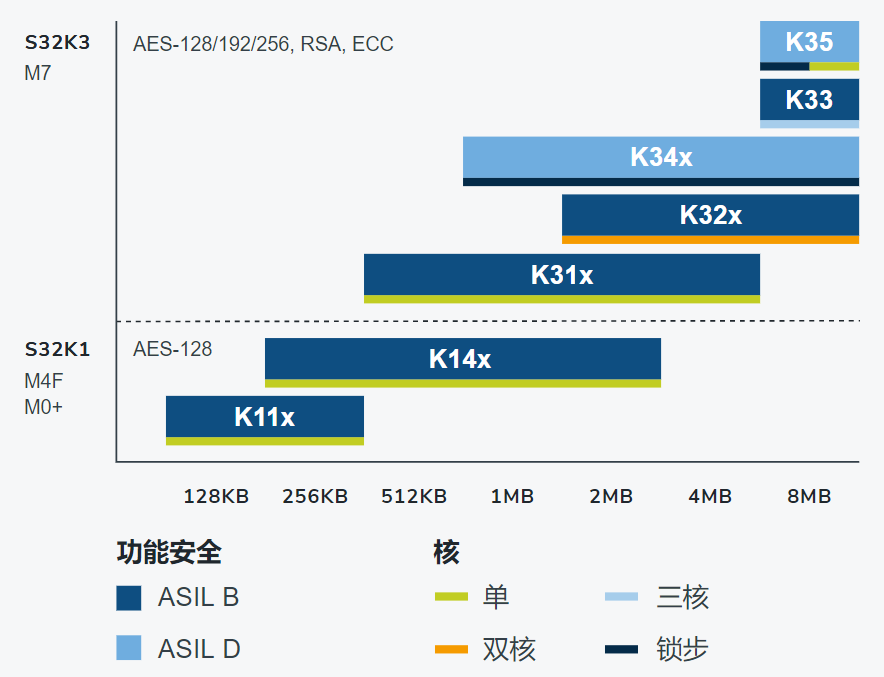
The NXP S32K series 32-bit Arm Cortex automotive MCU. (Source: NXP)
The S32K MCU provides hardware and software scalability and compatibility, supporting firmware over-the-air (FOTA), advanced hardware security, CAN FD, and Ethernet TSN. The MCU series includes S32K1 and S32K3, with the former being a single-core MCU based on the Cortex-M0+/M4F core, offering 128 KB to 2 MB of memory and supporting ASIL B, already in mass production; the latter is based on the Cortex-M7 core, featuring single-core, dual-core, and lock-step core MCUs, with 512 KB to 8 MB of memory and supporting ASIL B/D, currently in the sampling stage.
The specifications of the S32K1 MCU are as follows:
1. 48 MHz Cortex-M0+ core or 80/112 MHz Cortex-M4F core
2. 128 KB to 2 MB flash memory with ECC. Up to 4KB EEPROM
3. 12-bit 1 Msps ADC, 16-bit FlexTimer with dead-time insertion and fault detection capabilities
4. Scalable low-power run and stop modes. Fast wake-up, clock, and power gating
5. Available in QFN, LQFP, and MAPBGA packages. Temperature range -40 to 125/150° C, with at least 15 years of long-term supply guarantee
6. Functional safety, information security, and connectivity:
7. Compliant with ISO 26262, up to ASIL B level
8. Hardware and software watchdogs, clock/power/temperature monitors
9. Functional safety documentation and SafeAsure network community support
10. CSEc security engine – AES-128, secure boot, and key storage;
11. Ethernet (10/100 Mbps), CAN FD, FlexIO (UART, I2C, SPI, I2S, LIN, PWM…), serial audio interface, QSPIThe S32K1 MCU is suitable for the following automotive electronic applications:active suspension, dashboard, transmission and gearbox, brake and stability control, motorcycle engine control units (ECUs), and small engine control, advanced external lighting for vehicles, hybrid electric vehicle (HEV) applications.
Infineon Cypress Traveo II Automotive MCU
The Cypress Traveo II series is a 32-bit MCU designed by Infineon specifically for automotive applications. With built-in processing power and network connectivity in single-core Arm Cortex-M4F and dual-core Cortex-M7F, the performance of this series of microcontrollers can be increased from 400 DMIPS to 1500 DMIPS. The Traveo II series integrates an HSM (hardware security module), a dedicated Cortex-M0+ for secure processing, and embedded flash memory in dual-storage mode to meet FOTA requirements, thus providing advanced security features. This series of MCUs is also equipped with an optimized software platform for Cypress AUTOSAR MCAL (Microcontroller Abstraction Layer), self-test libraries, flash EEPROM emulation, and secure low-level drivers, combined with third-party firmware.
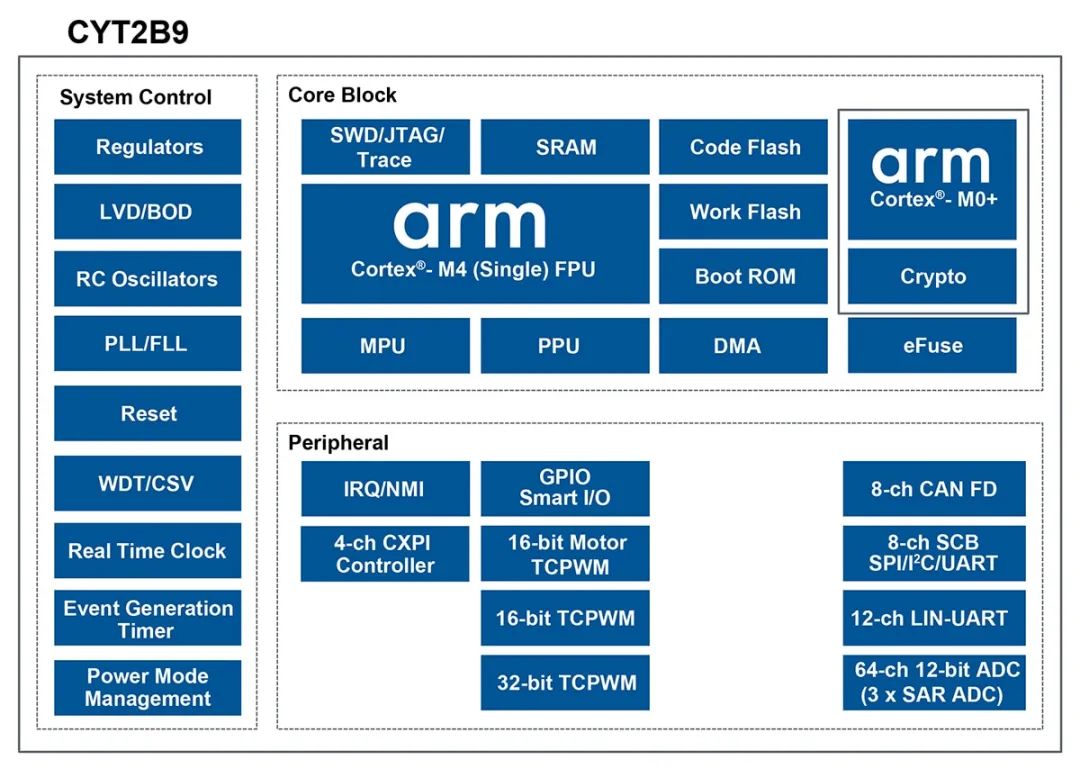
The Traveo II series includes entry-level models CYT2B6, CYT2B7, CYT2B9, and CYT2BL, as well as high-performance models CYT3BB/4BB and CYT4BF. Among them, the CYT2B9 MCU is designed for automotive body electronics, based on the Cortex-M4F core, with excellent processing power and network connectivity performance.
In addition to the CAN FD interface, this series also provides higher responsiveness and faster communication speeds through the embedded CXPI interface, making it an ideal choice for body control modules, HVAC, and lighting. The chip features six power modes, allowing the ECU to minimize overall power consumption while ensuring safety functions, with excellent scalability in memory size and pin count.
CYT2B9 32-bit MCU specifications are as follows:
1. Processor: 160-MHz Arm Cortex-M4F single-core, 2 MB code flash, 128 KB working flash, and 256 KB SRAM, along with Arm Cortex-M0+;
2. Connectivity: Up to 8-channel CAN FD for faster communication to increase data bandwidth, 4-channel CXPI for higher responsiveness to fully utilize the widely used LIN protocol; up to 8-channel runtime reconfigurable serial communication modules (SCB), in addition to 12-channel LIN/UART, each module can be configured as I2C, SPI, or UART;
3. Analog-to-digital converter: Up to 64 channels, 12-bit, with 3x successive approximation ADC (SAR ADC) units;
4. Timers: Up to 75-channel 16-bit and 8-channel 32-bit timer counter pulse width modulators (TCPWM), real-time clock (RTC), event generation timer;
5. GPIO: Up to 152 programmable GPIOs;
6. Security: Embedded eSHE (enhanced security hardware extension), HSM (hardware security module), and hardware-accelerated encryption engine (on/off option); one-time programmable fuses (OTP) for managing device lifecycle; memory protection unit (MPU), shared memory protection unit (SMPU), and peripheral protection unit (PPU) for memory and peripheral protection support for secure debugging; security features: ECC for memory, power voltage, and clock.
7. Temperature range: -40 to 105°C (S grade), -40 to 125°C (E grade).
Renesas RH850 Series Automotive MCU
The Renesas RH850 series 32-bit automotive MCUs are produced using Renesas’ 40nm process and offer single-core, multi-core, lock-step, and mixed-mode processor core architectures to support the high performance, low power, and high reliability requirements of automotive applications.
Features of the RH850 series MCUs include:
1. Scalable CPU cores, memory, and peripherals, allowing for the reuse of software resources. Integrated peripheral function IP and scalability; the specifications of basic IP (serial ports, counters, etc.) have been refined based on existing specifications, and future compatibility will be maintained; the specifications of differentiated IP (engine control, motor control timers, etc.) have been further optimized to help improve customer product competitiveness; supports PWM, LVD, CAN, LIN, and FlexRay.
2. High-performance CPU cores significantly improve the response performance of frequently used interrupt handling. Batch saving/restoring of multiple registers; immediately stop the currently running program; immediately resume from interrupt handling; branch prediction mechanism; use learning functions to predict program flow; high-speed flash access; instant read and run the next program.
3. Low power features help reduce overall vehicle power consumption. Reduced operating power; using 40nm process allows for finer circuits and reduced operating power; reduced leakage power; using low-leakage transistors to reduce leakage power; reduced standby power; cut off power to idle circuits during standby to further reduce power consumption.
4. Multi-core technology is used to achieve low power and high performance. Cores can be combined to execute functional safety, high-speed computing, and input/output processing to achieve high-performance core configurations.
5. Supports functional safety compliant with ISO26262, as shown in the figure below:
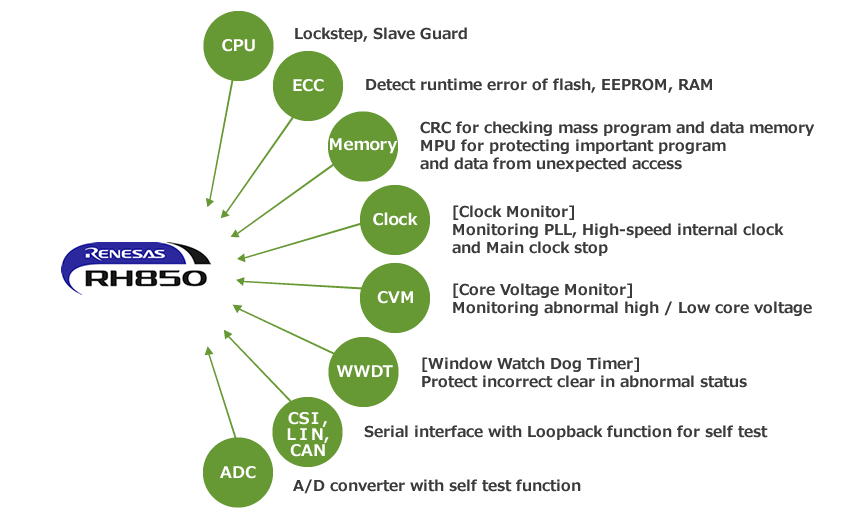
Software and Tools for the RH850 Series
Renesas and its partners provide various software and development tools to support large-scale complex software development for the automotive market.
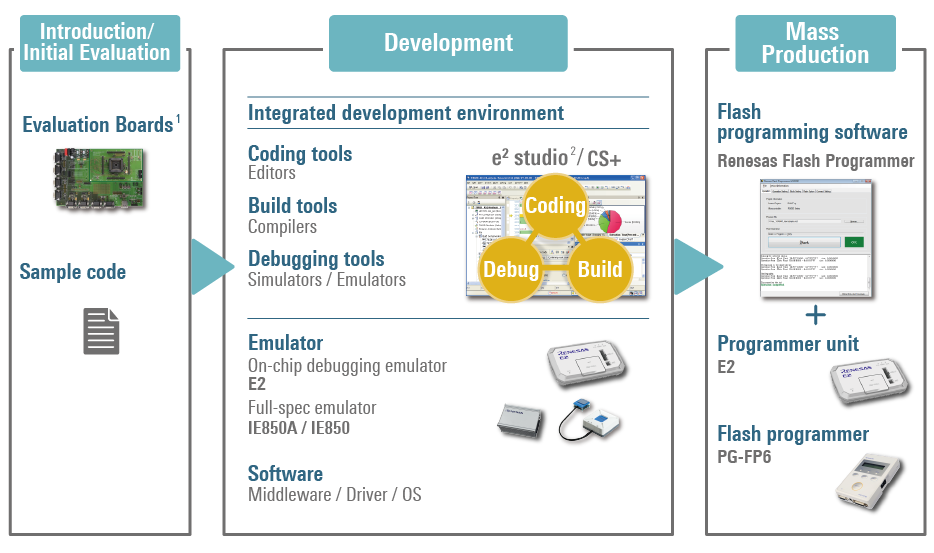
STMicroelectronics Stellar 32-bit Automotive MCU
The STMicroelectronics Stellar series automotive MCUs are designed for domain controller-based automotive platforms, building on ST’s high-performance automotive MCU expertise and extensive applications, extending its next-generation automotive microcontrollers from the SPC58 series.
The Stellar series MCUs combine the advantages of 28nm FD-SOI, embedded phase change memory (PCM), and multiple Arm Cortex R-52 cores, supporting frequencies of up to 600MHz and over 40MByte of embedded PCM non-volatile memory for fast and deterministic real-time computing, unaffected by the latency of non-integrated memory.
This series of MCUs features many innovative functions to ensure real-time performance and safety while minimizing power consumption in harsh, high-temperature environments. Its main applications include intelligent control of hybrid systems, electrification of automotive systems with onboard chargers, battery management systems, and DC-DC controllers, as well as smart gateways, advanced driver assistance systems (ADAS), and enhanced vehicle stability control.
Main Features of the Stellar Series MCUs:
1. Cores: Arm Cortex R-52, featuring lock-step and real-time performance.
2. Functional safety: ASIL-D compliant with ISO26262. To further enhance safety and reliability, Stellar MCUs have management programs for software separation and memory protection.
3. Information security: Advanced HSM with EVITA FULL support.
4. Embedded memory: Phase change memory compliant with AEC-Q100 0 level, up to 40MB PCM, with data retention up to 165°C. It supports Software-Over-The-Air to manage multiple firmware images. Convenient eMMC interfaces provide additional external storage.
5. Communication: Multi-bus routing through its rich automotive interfaces, including Ethernet, CAN-FD, and LIN CAN-FD, Ethernet, LIN, DSPI, FlexRay.
6. Operating temperature: Guaranteed to operate fully within the range of -40 to 150°C.
The SR6 G7 series Stellar integrated MCU: 32-bit Arm Cortex-R52, Cortex-M4 automotive MCU with 6x cores, hardware virtualization, 20.5 MB NVM (with 2x 19.5 MB “OTA X2” storage), HSM, ASIL-D. They meet the highly integrated requirements for domain controllers and ECUs in connected automatic updates and electric vehicle architectures, with excellent real-time and safety performance (with the highest ASIL-D capability).
Texas Instruments TI Jacinto 7 Processor
The Jacinto processor platform is based on TI’s decades of automotive systems and functional safety knowledge, featuring enhanced deep learning capabilities and advanced networking to address design challenges in advanced driver assistance systems (ADAS) and automotive gateway applications. The first two automotive-grade chips launched in this platform series, the TDA4VM processor for ADAS applications and the DRA829V processor for gateway systems, include dedicated accelerators for data-intensive tasks such as computer vision and deep learning. Additionally, the TDA4VM and DRA829V processors also include microcontrollers (MCUs) that support functional safety, enabling automotive manufacturers (OEMs) and tier-one suppliers to support tasks and functions with ASIL-D high safety requirements using a single chip. These two chips share a software platform, allowing developers to reuse a significant amount of software investment across multiple vehicle domain applications, thereby reducing system complexity and development costs.
The TDA4VM processor integrates a dual-core 64-bit Arm Cortex-A72 microprocessor subsystem, with performance up to 2.0GHz, 22K DMIPS, providing powerful on-chip data analysis capabilities, combined with visual pre-processing accelerators, making system performance more efficient. Automotive electronics engineers can use it to develop front camera applications, utilizing high-resolution 8-megapixel cameras to help vehicles see further and add more driving assistance enhancements. Furthermore, the TDA4VM processor can simultaneously operate 4 to 6 3-megapixel cameras while also fusing other perception processing such as radar, lidar, and ultrasound on a single chip. This multi-level processing capability allows the TDA4VM to serve as the centralized processing unit for ADAS, enabling critical functions in automated parking applications (such as surround view and image rendering display) while enhancing vehicle perception capabilities for 360-degree recognition.
The TDA4VM processor is suitable for the following applications: advanced surround view and parking assistance systems; autonomous sensor fusion/perception systems, including camera, radar, and lidar sensors; single-sensor and multi-sensor front camera systems; next-generation electronic rearview mirror systems.
The Jacinto 7 DRA829 processor is based on the Arm v8 64 architecture, providing advanced system integration to reduce system costs for automotive and industrial applications. Integrated diagnostics and functional safety features meet ASIL-B/C or SIL-2 certification/requirements. The integrated microcontroller (MCU) island eliminates the need for an external system MCU. This device features a gigabit Ethernet switch and PCIe hub to support network use cases requiring high data bandwidth. Up to four Arm Cortex-R5F subsystems can manage low-level timing-critical processing tasks, allowing the Arm Cortex-A72 to operate without interference from applications. The dual-core cluster configuration of the Arm Cortex-A72 facilitates multi-operating system applications while requiring very low demands on software management.
Five Domestic Automotive Grade MCU Manufacturers
ChipON KungFu Core 32-bit Automotive Grade MCU KF32A156
ChipON Microelectronics is an IC design company focused on automotive-grade and industrial-grade mixed-signal 8-bit/32-bit MCUs and DSP chips, developing high-reliability, high-quality MCU devices based on its self-developed KungFu processor architecture for over a decade. ChipON began investing in the research and design of high-reliability MCU devices in 2009 and is one of the earliest manufacturers in Greater China to provide automotive-grade MCUs with a Grade 1 operating temperature range and built-in 1 million erase cycles EEPROM. The KungFu automotive-grade MCU began to be widely used in the automotive aftermarket in 2012. In 2015, the second generation of automotive-grade MCUs based on the KungFu8 core was released, introducing AEC-Q100 device reliability testing specifications and entering the automotive OEM market. In 2019, 17 models of 8-bit MCUs that have been mass-produced for years and validated in large quantities were released, all meeting AEC-Q100 reliability certification, and the 32-bit automotive-grade MCU based on the KungFu32 core was also mass-produced, entering the mid-to-high-end automotive market.
The specifications of the KungFu Core 32-bit automotive grade MCU KF32A156 are as follows:
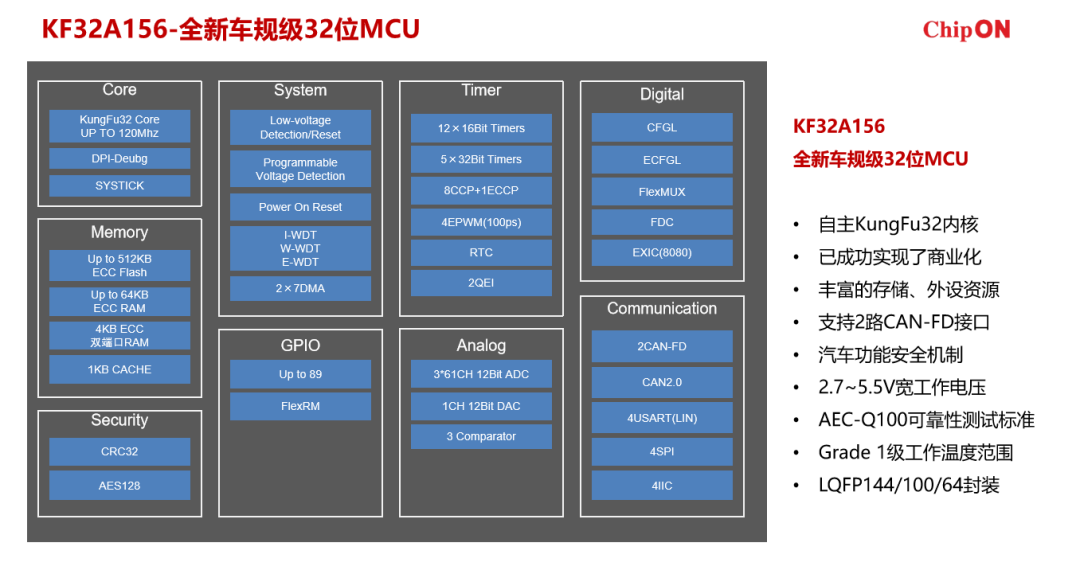
1. Self-developed core: KungFu32 core, 3-stage pipeline, 120MHz main frequency, 60uA/Mhz dynamic power consumption;
2. Memory: 512KB ECC Flash, 64KB ECC RAM, 4KB dual-port ECC RAM, supports program CACHE;
3. Communication interfaces: 2*CAN-FD (compatible with CAN2.0), 1*CAN2.0, 4*USART (LIN), 4*SPI (I2S), 4*IIC;
4. Rich mixed-signal resources: Enhanced ECCP, high-precision EPWM achieving 74ps precision control, 3 independent ADCs, 12-bit DAC, 3 CMPs, ECFGL programmable logic gate control unit;
5. Functional safety mechanisms: ECC Flash/RAM, PM power management unit, 3 watchdog modules, multi-ADC bus, CRC32/16 data verification, AES128 hardware encryption/decryption unit;
6. Automotive-grade standards: Compliant with 16949 quality standards for wafer and packaging/testing production lines, meeting AEC-Q100 Grade 1 reliability testing standards.
Development board physical image:
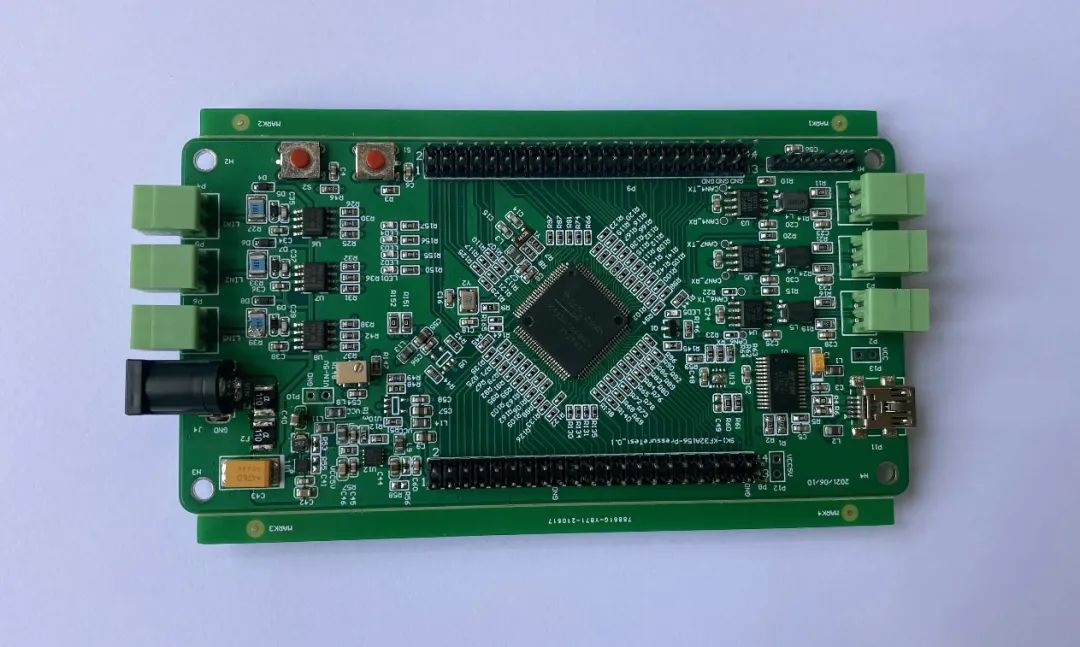
Market applications: Body controllers BCM, lighting control systems, HVAC/intelligent cockpit control systems, instrument control systems, door and seat control systems, etc.
Core competitive advantages: The core automotive product lines KF8A and KF32A have nearly 50 models, with good consistency and stability, meeting the application requirements of the automotive market’s complex environment, complying with AEC-Q100 automotive quality certification standards, widely covering body control, automotive motors and power, automotive lighting, and intelligent cockpit four major application scenarios, covering about 80% of the MCU usage in vehicles, and have entered the automotive OEM market in large quantities, establishing partnerships with SAIC Volkswagen, Shaanxi Automobile, Changan, Geely, Dongfeng, Foton, Great Wall, BAIC, and Aptiv.
AutoChips AC781x Series Automotive Grade MCU
AutoChips, a company that independently develops chip products, covers in-vehicle entertainment information system SoCs (IVI), vehicle networking SoCs (V2X), intelligent cockpit SoCs (e-Cockpit), in-vehicle audio power amplifiers (AMP), automotive-grade microcontrollers (MCUs), tire pressure monitoring dedicated sensor chips (MEMS), etc. Among them, the 32-bit MCU AC7811, which has passed AEC-Q100 Grade 1 automotive certification, achieved mass production in 2018 and is now widely used in body electronic control components (BMS, OBC, etc.), and has achieved supply chain integration with several major domestic automakers (Changan, Great Wall, BYD, etc.). At the same time, AutoChips’ second-generation automotive-grade MCU AC7801x series has also achieved mass production in 2019, expanding the range of AutoChips MCUs in body applications, providing customers with more cost-effective options in body control, sensors, lighting, and motor control fields. In addition, the third-generation automotive MCU from AutoChips, which meets functional safety certification, the AC7840x series, is about to be launched. This product uses an ARM Cortex-M4 core, meets ISO26262 ASIL-B standards, supports a working temperature of -40°C to 125°C, and is available in various packages from 48 to 176 pins, covering most high-end applications of body MCUs in traditional internal combustion vehicles and new energy vehicles.
The AC781x series MCU is based on the ARM Cortex-M3 core, mainly applied in automotive electronics and high-reliability industrial fields. The AC781x complies with AEC-Q100 certification specifications and has excellent EMC/ESD capabilities. Its specifications are as follows:
1. ARM Cortex-M3 core, up to 100MHz
2. Single-cycle instruction 32-bit multiplier
3. Enhanced flash acceleration engine
4. Compatible with CAN2.0B x2, HW LIN x1, UART LIN x1
5. Automotive-grade standard: AEC-Q100 Grade 1
6. Operating temperature: -40°C to 125°C
7. Operating voltage: 2.7V to 5.5V
8. ESD: HBM 8KV, CDM 750V
9. 128-bit unique identification code (UUID)
10. Packaging information: LQFP80, LQFP64.
Automotive Application Solutions and Schematics
1. BCM

2. Automotive Instrument Applications

General Development Board
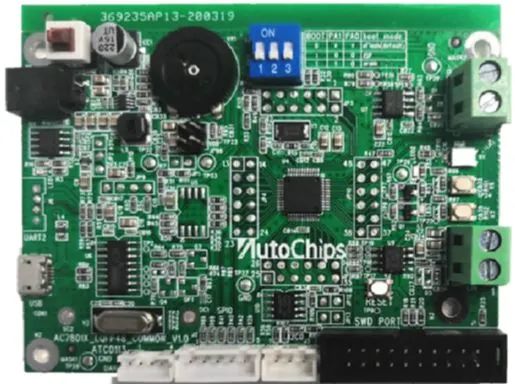
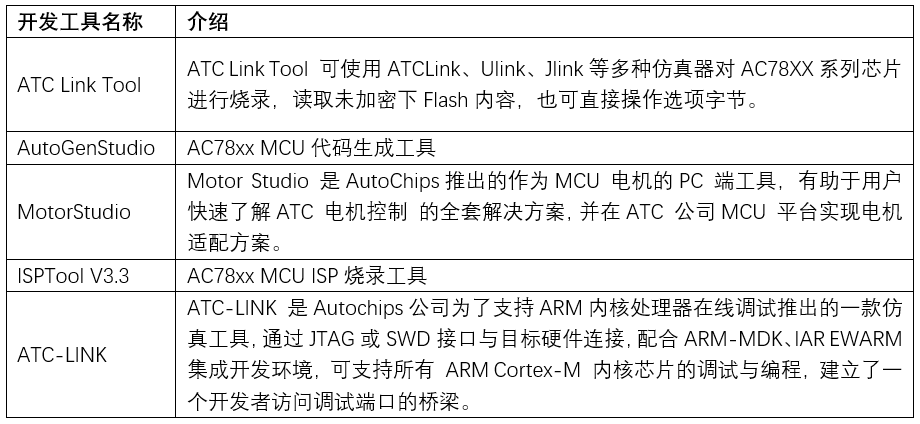
Saiteng Micro ASM3XA Automotive Grade MCU
Saiteng Micro has two series, ASM87A and ASM3XA, with multiple AEC-Q100 certified automotive grade MCUs, as well as supporting high-voltage LDO, LED driver chips, and power devices such as MOSFETs/IGBTs, which have been successfully applied in automotive LED dynamic flowing lights, in-vehicle wireless chargers, window glass lifters, intelligent wipers, and other automotive electronic components, and are supplied in bulk to many well-known automotive manufacturers.
The ASM3XA series 32-bit automotive MCU, based on the ARM Cortex M0+ core, features 16K/32K/64K Flash, 4K/8K SRAM, selectable internal/external high/low frequency, two low-power modes, supports RTC wake-up from Deep Sleep, has two standard UARTs, one low-power UART, SPI/IIC standard communication interfaces, 7-channel 12-bit 1MSPS high-speed sampling ADC, hardware CRC-16 module, 6-channel 16-bit/32-bit timer/counter, supports RTC counting and calendar functions, has 0.8uA ultra-low static power consumption, supports ISP online programming and unique code identification.
Market Applications and Solutions
The ASM3XA series has advantages such as high cost performance, low power consumption, and rich internal resources, making it widely applicable in areas such as anti-pinch for windows, intelligent wiper control, seat adjustment, and automotive air conditioning panel control. A complete rain and light sensor control solution based on the ASM31AX003 automotive-grade 32-bit M0 master MCU and wide voltage input automotive-grade LDO has been used in many passenger cars, trucks, and unmanned engineering vehicles in bulk, with excellent overall performance and high reliability.
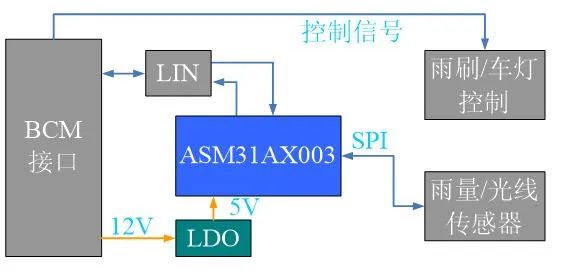
Development Tools
To facilitate users in developing application systems based on the ASM series MCUs, Saiteng Micro has developed dedicated ASM-LINK emulators and ASM-SinPro programmers. The ASM-LINK emulator is a self-developed two-wire emulator that can be used for emulation debugging of ASM series 8-bit and 32-bit MCUs, supporting Keil integrated compilation environment, supporting single-step, full-speed operation, and supporting Flash programming and unlocking. The ASM-SinPro programmer supports offline programming, online programming, and can calibrate the chip frequency during chip burning, supports rolling code burning, programmable burn counts, program encryption, and also connects to burning machines for high-speed automatic burning.
Core competitive advantages: Saiteng Micro’s development plan in the automotive electronics field is becoming clearer, focusing on the main control MCU, supplemented by supporting power devices and power management chips, providing platform solutions for body control, in-vehicle electronics, and electric control systems for new energy vehicles, forming a unique new model of automotive chip business with “MCU + power management + power devices” platform solutions and modules.
Chipways XL6600 Series Automotive Grade MCU
Chipways is an IC design company focused on automotive intelligent sensing and control chips, having mastered key core technologies for automotive-grade Hall sensor chips, automotive-grade microcontroller chips (MCUs), vehicle networking V2X communication chips, and multi-cell battery group monitoring chips (AFE) for new energy vehicle battery management, and has obtained multiple patents.
The XL6600 series chip is an automotive microcontroller chip that meets AEC-Q100 and ISO26262 automotive safety ASIL B standards, based on a 32-bit ARM Cortex-M3 core, with a main frequency of up to 104MHz, focusing on low power consumption and high performance, optimized for cost-sensitive applications. This MCU provides scalable solutions suitable for a wide range of body electronics applications. Additionally, it supports development tools such as MDK and provides reference designs for BLDC motor control, helping customers get started quickly.
Specifications
1. Wide application: Meets the needs of automotive body electronic systems, supports a voltage range of 2.7V to 5.5V, and can support a temperature application range of -40°C to 125°C;
2. Low power: Multiple power-saving modes (slow-down/sleep/stop/wake-up);
3. High performance: Provides cost-effective solutions based on ARM, with powerful functions for each business module;
4. High safety and reliability: Integrated over-temperature protection, short-circuit protection, clock failure detection, etc., with strong electromagnetic compatibility and high safety ESD levels;
5. Meets strict automotive testing AEC-Q100 reliability standards;
6. Meets ISO26262 automotive safety ASIL B standard requirements;
7. Supports three packaging forms: 48/64/80 LQFP.
Development Tools
● Self-developed tool platform Chipways Studio, providing IDE, compiler, debugger, and plugins
● Also supports development IDE tools such as MDK, IAR
● Software Development Kit (SDK), diagnostic systems
● Kernel self-test library
● SWD and other Debug & trace
Driver Software
● Standard driver STD
● AUTOSAR: MCAL and its configuration tools
Middleware and Applications
● Common control algorithms and motor control libraries for automotive
● Reference designs for body control such as motor control
MCU Hardware Development Board
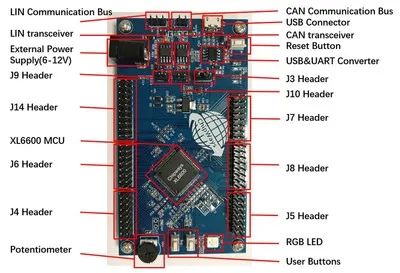
Market applications: Body control (BCM), in-vehicle air conditioning control (HVAC), BLDC motor control, windows/sunroofs/doors, seats/mirrors/wipers, trunk/seatbelt control, and other general applications.
BYD Semiconductor BF7006AMXX Series Automotive Grade MCU
BYD Semiconductor’s automotive-grade MCUs adopt highly reliable automotive-grade manufacturing processes, strictly tested and certified according to AEC-Q100 Grade 1 quality standards, following the production control processes under the IATF16949 system. The safety level of its 8-bit and 32-bit core series MCUs can reach ISO26262 ASIL B standards, and they have been widely used in various automotive general controls such as electric windows, electric seats, wipers, lights, instruments, mirrors, and locks.
The BF7006AMXX, as a 32-bit general-purpose MCU that meets automotive AEC-Q100 GRADE1 quality level, is designed according to ISO26262 ASIL-B level standards; it integrates various communication modules such as CAN, LIN, UART, multiple counters, timers, and PWM functions, and includes high-precision ADC, storage support for EEPROM instant data retention, and other general modules. The packaging forms are LQFP64, LQFP48, TSSOP28, suitable for various automotive electronic body control applications such as electric windows, electric seats, wipers, lights, and locks.
The system composition of the BF7006AMXX chip is shown in the following figure:
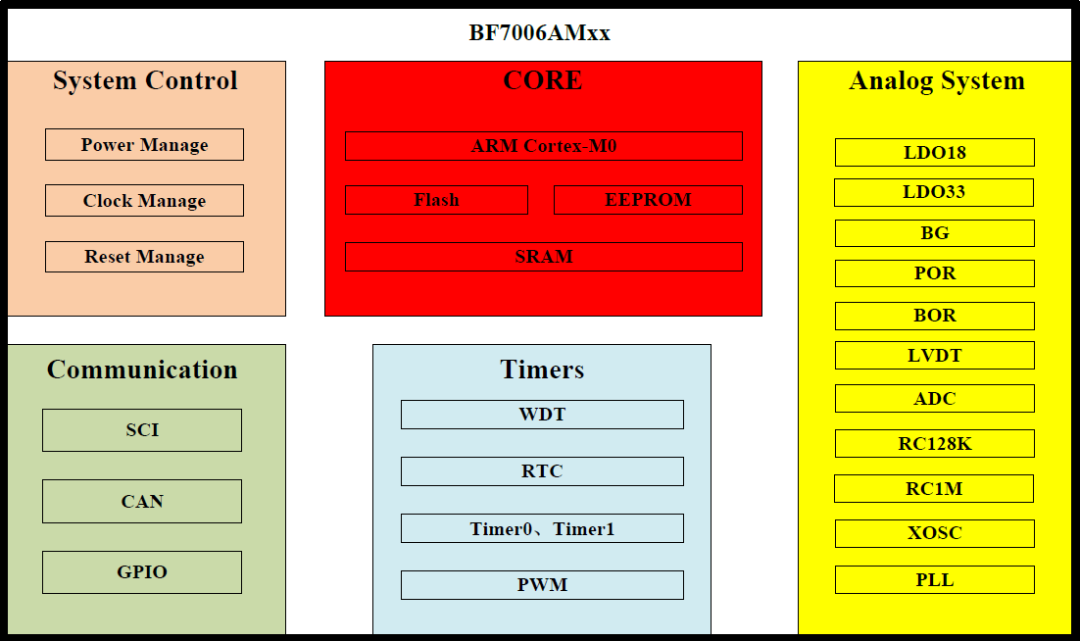
The main resources of the BF7006AMXX chip are shown in the following table:
